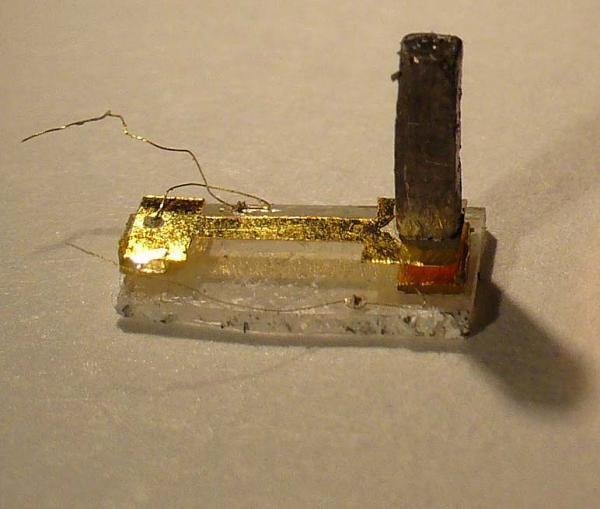The electrons behaved like photons when they passed through a crystal made of the metal bismuth

A team of researchers from the Center for Materials Science and Engineering at Princeton University observed electrons moving through a crystal of the metal bismuth acting as light. This discovery, funded by the National Science Foundation (NSF), was published in the prestigious journal Science and could lead to the development of new types of electronic devices.
Electrons, or the particles of electricity, travel through the air much like baseballs. Alternatively, when the electron moves within an ordered and patterned array of crystals, it behaves in a completely different way. The basic equations describing its motion in the crystal are very different from those for the free-flying sphere model. For example, in bismuth the basic equations of electron motion are similar to those describing the behavior of light. Although the electrons move inside the crystal at a speed slower than the speed of light, they behave as if they are massless, similar to photons, the smallest units of light.
About a decade ago, theoretical physicists funded by the foundation studied electrons confined in artificial layered structures made of semiconductors - the material from which today's transistors are made. They estimated that new types of electronic material governed by the laws of quantum mechanics would appear from the electrons on different surfaces responsible for their movement. Scientists estimated that bismuth crystals would also exhibit such electronic states.
The group from Princeton, led by physics professor N. Phuan Ong placed a crystal of bismuth on a bent beam or cantilever, and then put this device into a strong magnetic field that is a million times higher than the Earth's magnetic field. In such a huge magnetic field the device warped. The manner of deformation suggests the new and subtle type of material in the bismuth crystal.
In a single crystal of bismuth, the electrons are often delineated into three "valleys" in the abstract landscape image that scientists use to represent the energy states of the electrons in the crystal structure. Through careful examination of the warping device, the researchers observed a transition from a state in which the electrons "prefer" to settle in one valley to a state in which they divide their time equally between all three valleys - a behavior governed by the basic laws of quantum mechanics.
"This fact is exciting because this was predicted but never observed before, and ultimately it may lead to new ways of thinking in the computer and electronics industries," notes one of the researchers.
Along with this research, the theory of electrodynamics presents a varied and rich landscape of the possible electronic states of semiconductors, and the Princeton researchers continue this adventure. One day, these new electronic states of matter could lead to the development of efficient and new electronic devices that will utilize the principles of quantum mechanics for extremely fast calculations and reliable communication.

4 תגובות
I just didn't understand what was meant by the sentence "... photons, the smallest units of light." Dr. Nachmani?
A very nice achievement, there is no doubt that it will be a groundbreaking first step in many fields - time will tell, except for developments in the field of computing/electronics that move physics forward a little.
I didn't understand what the difference was. Every semiconductor is governed by the laws of quantum mechanics.
God willing, "one day" will soon arrive in our days